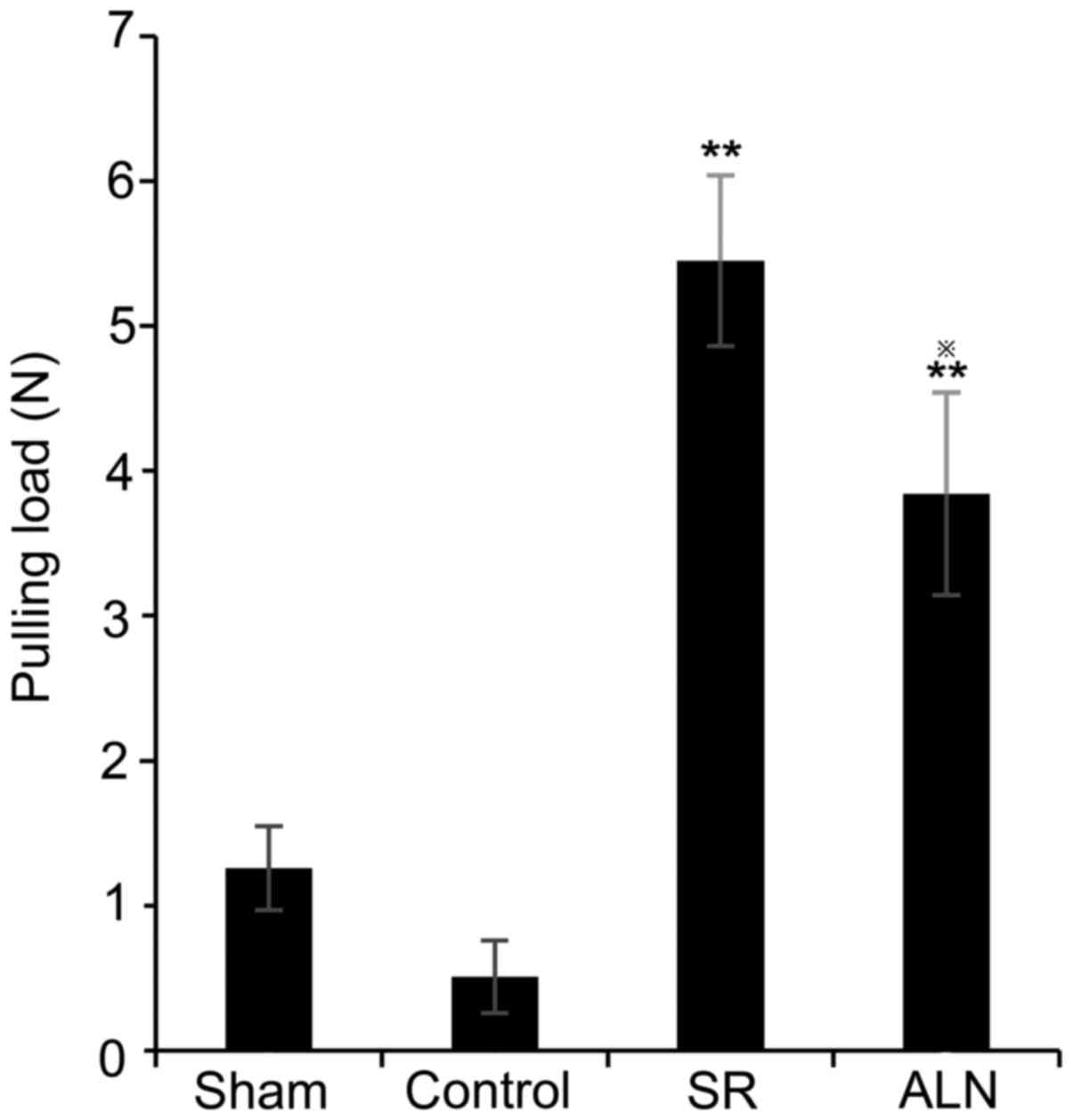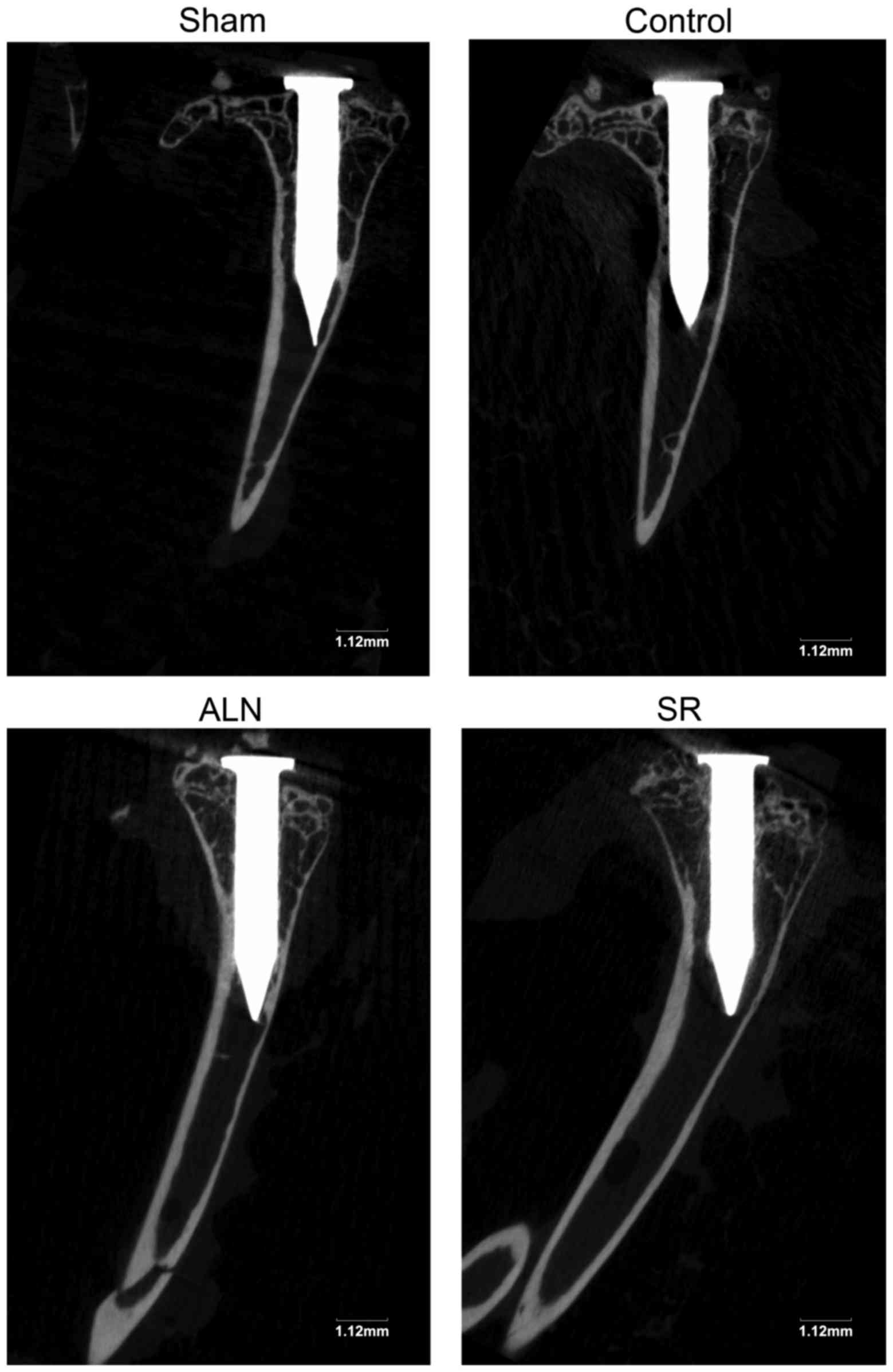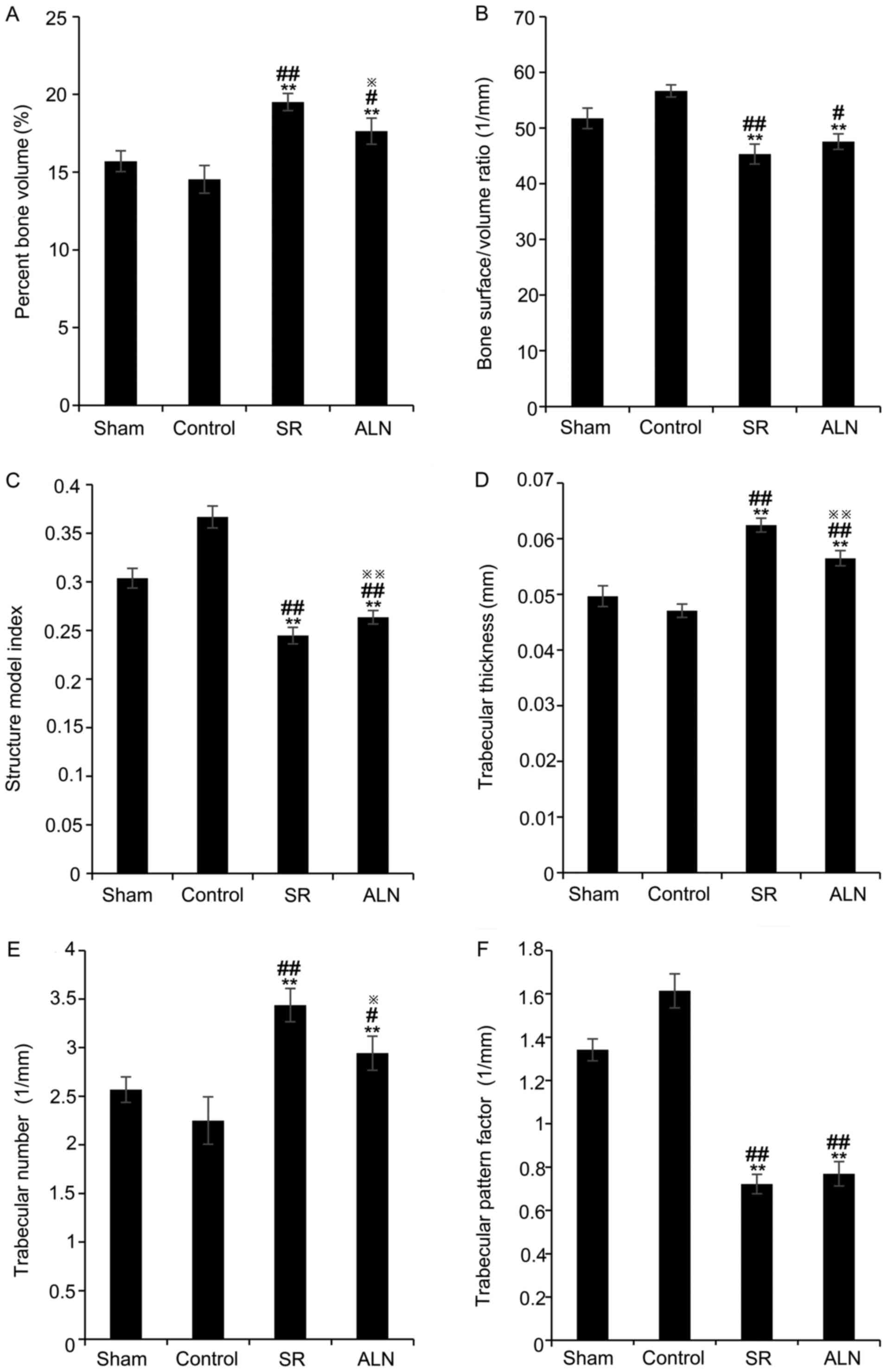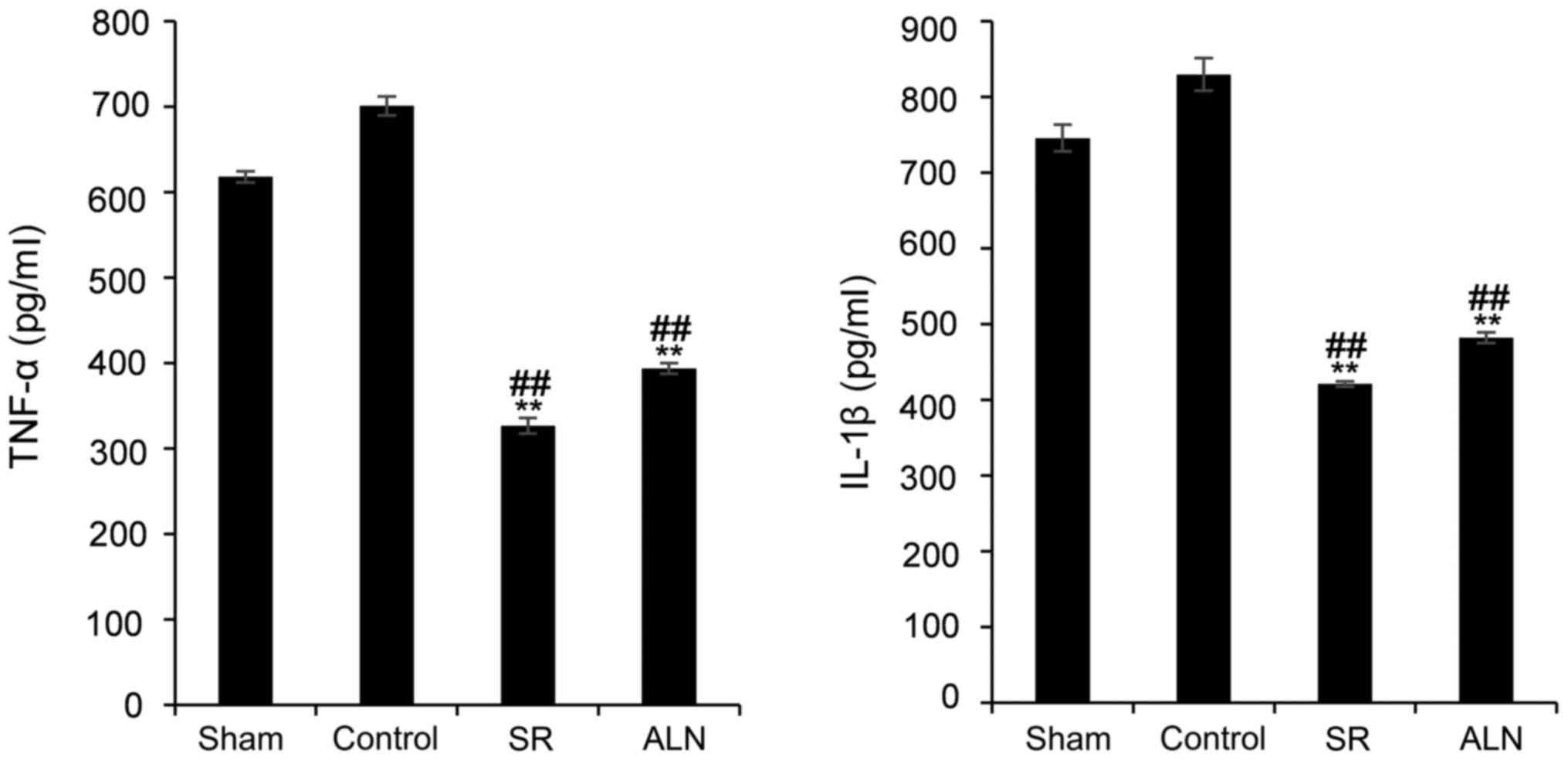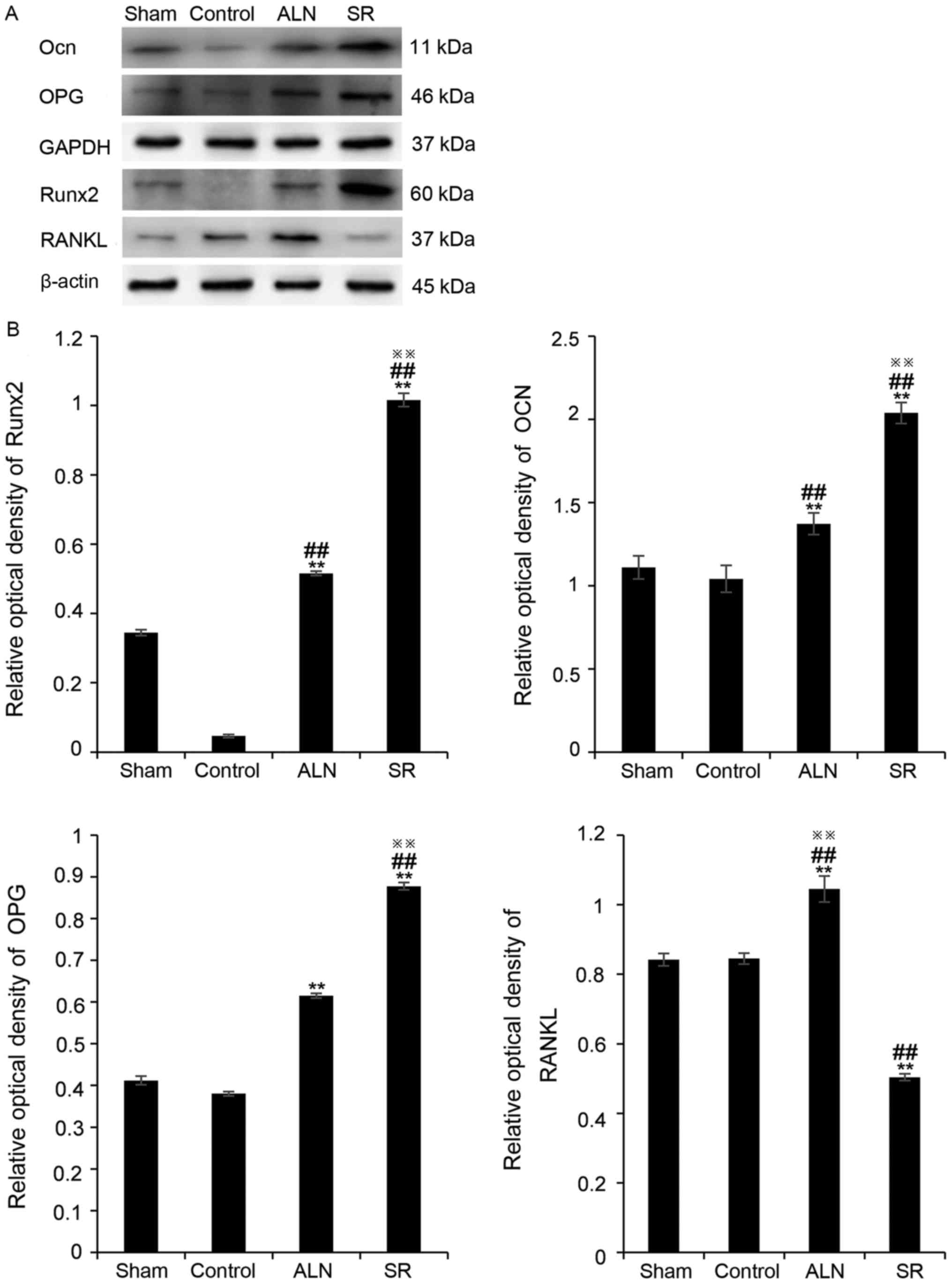|
1
|
Wang ML, Sharkey PF and Tuan RS: Particle
bioreactivity and wear-mediated osteolysis. J Arthroplasty.
19:1028–1038. 2004. View Article : Google Scholar : PubMed/NCBI
|
|
2
|
Pioletti DP and Kottelat A: The influence
of wear particles in the expression of osteoclastogenesis factors
by osteoblasts. Biomaterials. 25:5803–5808. 2004. View Article : Google Scholar : PubMed/NCBI
|
|
3
|
Shao H, Shen J, Wang M, Cui J, Wang Y, Zhu
S, Zhang W, Yang H, Xu Y and Geng D: Icariin protects against
titanium particle-induced osteolysis and inflammatory response in a
mouse calvarial model. Biomaterials. 60:92–99. 2015. View Article : Google Scholar : PubMed/NCBI
|
|
4
|
Flecher X, Rolland C, Rixrath E, Argenson
J, Robert P, Bongrand P, Wendling S and Vitte J: Local and systemic
activation of the mononuclear phagocyte system in aseptic loosening
of total hip arthroplasty. J Clin Immunol. 29:681–690. 2009.
View Article : Google Scholar : PubMed/NCBI
|
|
5
|
Pajarinen J, Lin T, Nabeshima A, Jämsen E,
Lu L, Nathan K, Yao Z and Goodman SB: Mesenchymal stem cells in the
aseptic loosening of total joint replacements. J Biomed Mater Res
A. 105:1195–1207. 2017. View Article : Google Scholar : PubMed/NCBI
|
|
6
|
Haleem-Smith H, Argintar E, Bush C,
Hampton D, Postma WF, Chen FH, Rimington T, Lamb J and Tuan RS:
Biological responses of human mesenchymal stem cells to titanium
wear debris particles. J Orthop Res. 30:853–863. 2012. View Article : Google Scholar : PubMed/NCBI
|
|
7
|
Huang C, Li L, Yu X, Gu Z and Zhang X: The
inhibitory effect of strontium-doped calcium polyphosphate
particles on cytokines from macrophages and osteoblasts leading to
aseptic loosening in vitro. Biomed Mater. 9:0250102014. View Article : Google Scholar : PubMed/NCBI
|
|
8
|
Ferreira E, Bortolin RH, Freire-Neto FP,
Souza K, Bezerra JF, Ururahy M, Ramos AMO, Himelfarb ST, Abreu BJ,
Didone TVN, et al: Zinc supplementation reduces rankl/opg ratio and
prevents bone architecture alterations in ovariectomized and type 1
diabetic rats. Nutr Res. 40:48–56. 2017. View Article : Google Scholar : PubMed/NCBI
|
|
9
|
Szwarc MM, Kommagani R, Jacob AP, Dougall
WC, Ittmann MM and Lydon JP: Aberrant activation of the rank
signaling receptor induces murine salivary gland tumors. PLoS One.
10:e1284672015. View Article : Google Scholar
|
|
10
|
Neuerburg C, Wedemeyer C, Goedel J,
Schlepper R, Hilken G, Schwindenhammer B, Schilling AF, Jager M and
Kauther MD: The role of calcitonin receptor signalling in
polyethylene particle-induced osteolysis. Acta Biomater.
14:125–132. 2015. View Article : Google Scholar : PubMed/NCBI
|
|
11
|
Armas LA and Recker RR: Pathophysiology of
osteoporosis: New mechanistic insights. Endocrinol Metab Clin North
Am. 41:475–486. 2012. View Article : Google Scholar : PubMed/NCBI
|
|
12
|
Riggs BL: The mechanisms of estrogen
regulation of bone resorption. J Clin Invest. 106:1203–1204. 2000.
View Article : Google Scholar : PubMed/NCBI
|
|
13
|
Syed F and Khosla S: Mechanisms of sex
steroid effects on bone. Biochem Biophys Res Commun. 328:688–696.
2005. View Article : Google Scholar : PubMed/NCBI
|
|
14
|
Frenkel B, Hong A, Baniwal SK, Coetzee GA,
Ohlsson C, Khalid O and Gabet Y: Regulation of adult bone turnover
by sex steroids. J Cell Physiol. 224:305–310. 2010. View Article : Google Scholar : PubMed/NCBI
|
|
15
|
Gilbert L, He X, Farmer P, Boden S,
Kozlowski M, Rubin J and Nanes MS: Inhibition of osteoblast
differentiation by tumor necrosis factor-alpha. Endocrinology.
141:3956–3964. 2000. View Article : Google Scholar : PubMed/NCBI
|
|
16
|
Manolagas SC: Birth and death of bone
cells: Basic regulatory mechanisms and implications for the
pathogenesis and treatment of osteoporosis. Endocr Rev. 21:115–137.
2000. View Article : Google Scholar : PubMed/NCBI
|
|
17
|
Raehtz S, Bierhalter H, Schoenherr D,
Parameswaran N and McCabe LR: Estrogen deficiency exacerbates type
1 diabetes induced bone TNFα expression and osteoporosis in female
mice. Endocrinology. 158:2086–2101. 2017. View Article : Google Scholar : PubMed/NCBI
|
|
18
|
Dorr LD, Faugere MC, Mackel AM, Gruen TA,
Bognar B and Malluche HH: Structural and cellular assessment of
bone quality of proximal femur. Bone. 14:231–242. 1993. View Article : Google Scholar : PubMed/NCBI
|
|
19
|
Dorr LD, Faugere MC, Mackel AM, Gruen TA,
Bognar B and Malluche HH: Structural and cellular assessment of
bone quality of proximal femur. Bone. 14:231–242. 1993. View Article : Google Scholar : PubMed/NCBI
|
|
20
|
Bottai V, Dell'Osso G, Celli F, Bugelli G,
Cazzella N, Cei E, Guido G and Giannotti S: Total hip replacement
in osteoarthritis: The role of bone metabolism and its
complications. Clin Cases Miner Bone Metab. 12:247–250.
2015.PubMed/NCBI
|
|
21
|
Stepan JJ, Alenfeld F, Boivin G, Feyen JH
and Lakatos P: Mechanisms of action of antiresorptive therapies of
postmenopausal osteoporosis. Endocr Regul. 37:225–238.
2003.PubMed/NCBI
|
|
22
|
Chen BL, Xie DH, Zheng ZM, Lu W, Ning CY,
Li YQ, Li FB and Liao WM: Comparison of the effects of alendronate
sodium and calcitonin on bone-prosthesis osseointegration in
osteoporotic rats. Osteoporos Int. 22:265–270. 2011. View Article : Google Scholar : PubMed/NCBI
|
|
23
|
O'Hara LJ, Nivbrant B and Rohrl S:
Cross-linked polyethylene and bisphosphonate therapy for osteolysis
in total hip arthroplasty: A case report. J Orthop Surg (Hong
Kong). 12:114–121. 2004. View Article : Google Scholar : PubMed/NCBI
|
|
24
|
Reginster JY, Brandi ML, Cannata-Andia J,
Cooper C, Cortet B, Feron JM, Genant H, Palacios S, Ringe JD and
Rizzoli R: The position of strontium ranelate in today's management
of osteoporosis. Osteoporos Int. 26:1667–1671. 2015. View Article : Google Scholar : PubMed/NCBI
|
|
25
|
Karakan NC, Akpinar A, Goze F and Poyraz
O: Investigating the effects of systemically administered strontium
ranelate on alveolar bone loss histomorphometrically and
histopathologically on experimental periodontitis in rats. J
Periodontol. 88:e24–e31. 2017. View Article : Google Scholar : PubMed/NCBI
|
|
26
|
Marie PJ: Optimizing bone metabolism in
osteoporosis: Insight into the pharmacologic profile of strontium
ranelate. Osteoporos Int. 14 Suppl 3:S9–S12. 2003. View Article : Google Scholar : PubMed/NCBI
|
|
27
|
Sun S, Guo H, Zhang J, Yu B, Sun K and Jin
Q: Adenovirus-mediated expression of bone morphogenetic protein-2
activates titanium particle-induced osteoclastogenesis and this
effect occurs in spite of the suppression of tnf-alpha expression
by sirna. Int J Mol Med. 32:403–409. 2013. View Article : Google Scholar : PubMed/NCBI
|
|
28
|
National Research Council (US) Committee
for the Update of the Guide for the Care and Use of Laboratory
Animals: Guide for the Care and Use of Laboratory Animals. 8th
edition. National Academies Press (US); Washington, D.C: 2011
|
|
29
|
Yang S, Yu H, Gong W, Wu B, Mayton L,
Costello R and Wooley PH: Murine model of prosthesis failure for
the long-term study of aseptic loosening. J Orthop Res. 25:603–611.
2007. View Article : Google Scholar : PubMed/NCBI
|
|
30
|
Huang RC, Khan SN, Sandhu HS, Metzl JA,
Cammisa FJ, Zheng F, Sama AA and Lane JM: Alendronate inhibits
spine fusion in a rat model. Spine (Phila Pa 1976). 30:2516–2522.
2005. View Article : Google Scholar : PubMed/NCBI
|
|
31
|
Geng T, Sun S, Chen X, Wang B, Guo H,
Zhang S and Jin Q: Strontium ranelate reduces the progression of
titanium particle-induced osteolysis by increasing the ratio of
osteoprotegerin to receptor activator of nuclear factor-κB ligand
in vivo. Mol Med Rep. 17:3829–3836. 2018.PubMed/NCBI
|
|
32
|
Bouxsein ML, Boyd SK, Christiansen BA,
Guldberg RE, Jepsen KJ and Müller R: Guidelines for assessment of
bone microstructure in rodents using micro-computed tomography. J
Bone Miner Res. 25:1468–1486. 2010. View Article : Google Scholar : PubMed/NCBI
|
|
33
|
Chen B, Li Y, Yang X, Xu H and Xie D:
Zoledronic acid enhances bone-implant osseointegration more than
alendronate and strontium ranelate in ovariectomized rats.
Osteoporos Int. 24:2115–2121. 2013. View Article : Google Scholar : PubMed/NCBI
|
|
34
|
Ucer S, Iyer S, Kim H, Han L, Rutlen C,
Allison K, Thostenson JD, de Cabo R, Jilka RL, O'Brien C, et al:
The effects of aging and sex steroid deficiency on the murine
skeleton are independent and mechanistically distinct. J Bone Miner
Res. 32:560–574. 2017. View Article : Google Scholar : PubMed/NCBI
|
|
35
|
Bouxsein ML, Boyd SK, Christiansen BA,
Guldberg RE, Jepsen KJ and Muller R: Guidelines for assessment of
bone microstructure in rodents using micro-computed tomography. J
Bone Miner Res. 25:1468–1486. 2010. View Article : Google Scholar : PubMed/NCBI
|
|
36
|
Bonnelye E, Chabadel A, Saltel F and
Jurdic P: Dual effect of strontium ranelate: Stimulation of
osteoblast differentiation and inhibition of osteoclast formation
and resorption in vitro. Bone. 42:129–138. 2008. View Article : Google Scholar : PubMed/NCBI
|
|
37
|
Faverani LP, Polo TO, Ramalho-Ferreira G,
Momesso GAC, Hassumi JS, Rossi AC, Freire AR, Prado FB, Luvizuto
ER, Gruber R and Okamoto R: Raloxifene but not alendronate can
compensate the impaired osseointegration in osteoporotic rats. Clin
Oral Invest. 22:255–265. 2018. View Article : Google Scholar
|
|
38
|
Stuss M, Sewerynek E, Król I, Stępień-Kłos
W and Jędrzejczyk S: Assessment of OPG, RANKL, bone turnover
markers serum levels and BMD after treatment with strontium
ranelate and ibandronate in patients with postmenopausal
osteoporosis. Endokrynol Pol. 67:174–184. 2016. View Article : Google Scholar : PubMed/NCBI
|
|
39
|
Komrakova M, Weidemann A, Dullin C, Ebert
J, Tezval M, Stuermer KM and Sehmisch S: The impact of strontium
ranelate on metaphyseal bone healing in ovariectomized rats. Calcif
Tissue Int. 97:391–401. 2015. View Article : Google Scholar : PubMed/NCBI
|
|
40
|
Gur A, Denli A, Cevik R, Nas K, Karakoc M
and Sarac AJ: The effects of alendronate and calcitonin on
cytokines in postmenopausal osteoporosis: A 6-month randomized and
controlled study. Yonsei Med J. 44:99–109. 2003. View Article : Google Scholar : PubMed/NCBI
|
|
41
|
Liu X, Zhu S, Cui J, Shao H, Zhang W, Yang
H, Xu Y, Geng D and Yu L: Strontium ranelate inhibits
titanium-particle-induced osteolysis by restraining inflammatory
osteoclastogenesis in vivo. Acta Biomater. 10:4912–4918. 2014.
View Article : Google Scholar : PubMed/NCBI
|
|
42
|
Bakker AD, Zandieh-Doulabi B and
Klein-Nulend J: Strontium ranelate affects signaling from
mechanically-stimulated osteocytes towards osteoclasts and
osteoblasts. Bone. 53:112–119. 2013. View Article : Google Scholar : PubMed/NCBI
|
|
43
|
Guo X, Wei S, Lu M, Shao Z, Lu J, Xia L,
Lin K and Zou D: Dose-dependent effects of strontium ranelate on
ovariectomy rat bone marrow mesenchymal stem cells and human
umbilical vein endothelial cells. Int J Biol Sci. 12:1511–1522.
2016. View Article : Google Scholar : PubMed/NCBI
|
|
44
|
Muise ES, Podtelezhnikov AA, Pickarski M,
Loboda A, Tan Y, Hu G, Thomspon JR and Duong T: Effects of
long-term odanacatib treatment on bone gene expression in
ovariectomized adult rhesus monkeys: Differentiation from
alendronate. J Bone Miner Res. 31:839–851. 2016. View Article : Google Scholar : PubMed/NCBI
|
|
45
|
Kang AR, Oh YR, Kim HY, Park MJ, Joo BS,
Choi WJ, Lee JY, Jung MH, Ji YI and Choi JS: Up-regulation of
inhibitors of dna binding/differentiation gene during
alendronate-induced osteoblast differentiation. Arch Gynecol
Obstet. 285:1331–1338. 2012. View Article : Google Scholar : PubMed/NCBI
|
|
46
|
Shimizu E, Tamasi J and Partridge NC:
Alendronate affects osteoblast functions by crosstalk through
ephrinb1-ephb. J Dent Res. 91:268–274. 2012. View Article : Google Scholar : PubMed/NCBI
|
|
47
|
Rossini M, Adami G, Adami S, Viapiana O
and Gatti D: Safety issues and adverse reactions with osteoporosis
management. Exp Opin Drug Saf. 15:321–332. 2015. View Article : Google Scholar
|
|
48
|
Guo X, Wei S, Lu M, Shao Z, Lu J, Xia L,
Lin K and Zou D: Dose-dependent effects of strontium ranelate on
ovariectomy rat bone marrow mesenchymal stem cells and human
umbilical vein endothelial cells. Int J Biol Sci. 12:1511–1522.
2016. View Article : Google Scholar : PubMed/NCBI
|
|
49
|
Gu Z, Huang B, Li Y, Tian M, Li L and Yu
X: Strontium-doped calcium polyphosphate/ultrahigh molecular weight
polyethylene composites: A new class of artificial joint components
with enhanced biological efficacy to aseptic loosening. Mater Sci
Eng C Mater Biol Appl. 61:526–533. 2016. View Article : Google Scholar : PubMed/NCBI
|
|
50
|
Tian A, Zhai JJ, Peng Y, Zhang L, Teng MH,
Liao J, Sun X and Liang X: Osteoblast response to titanium surfaces
coated with strontium ranelate-loaded chitosan film. Int J Oral
Maxillofac Implants. 29:1446–1453. 2014. View Article : Google Scholar : PubMed/NCBI
|
|
51
|
Newman SD, Lotfibakhshaiesh N, O'Donnell
M, Walboomers XF, Horwood N, Jansen JA, Amis AA, Cobb JP and
Stevens MM: Enhanced osseous implant fixation with
strontium-substituted bioactive glass coating. Tissue Eng Part A.
20:1850–1857. 2014. View Article : Google Scholar : PubMed/NCBI
|
|
52
|
Wornham DP, Hajjawi MO, Orriss IR and
Arnett TR: Strontium potently inhibits mineralisation in
bone-forming primary rat osteoblast cultures and reduces numbers of
osteoclasts in mouse marrow cultures. Osteoporos Int. 25:2477–2484.
2014. View Article : Google Scholar : PubMed/NCBI
|
|
53
|
Rossini M, Adami G, Adami S, Viapiana O
and Gatti D: Safety issues and adverse reactions with osteoporosis
management. Exp Opin Drug Saf. 15:321–332. 2015. View Article : Google Scholar
|
|
54
|
Lee HY, Shen MX, Lim YL, Tay YK, Chan MM,
Pang SM, Xiao ZW, Ang SB and Ren EC: Increased risk of strontium
ranelate-related sjs/ten is associated with hla. Osteoporos Int.
27:2577–2583. 2016. View Article : Google Scholar : PubMed/NCBI
|
|
55
|
Tian A, Zhai JJ, Peng Y, Zhang L, Teng MH,
Liao J, Sun X and Liang X: Osteoblast response to titanium surfaces
coated with strontium ranelate-loaded chitosan film. Int J Oral
Maxillofac Implants. 29:1446–1453. 2014. View Article : Google Scholar : PubMed/NCBI
|















